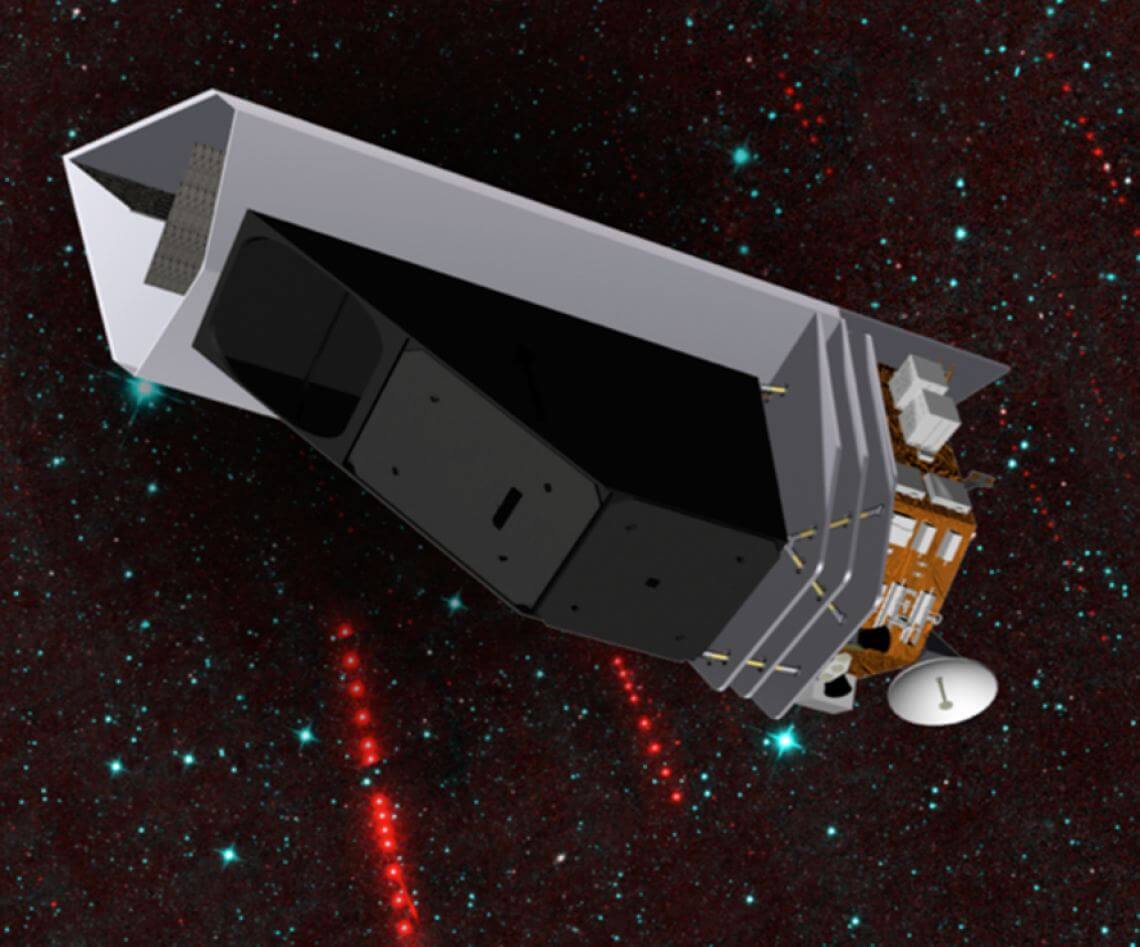The spacecraft will conduct its survey in infrared. Telescopes on Earth have found most of the nearby objects cataloged so far, but the remaining ones are very difficult to find in visible light

Many of the threats facing humanity come from within us. If we were to name them, they would include tribalism, greed, and the fact that we are evolved primates, and our brains have much in common with animal minds. Because of our animal mind we are subject to many of the same destructive emotions and impulses that animals are subject to. We start wars and get involved in international conflicts. There is genocide, pogroms, boats full of doomed immigrants and horrible combinations of all three.
But not all the threats we face are as difficult to control as our internal conflicts. Some threats are external, and we can use our technology and knowledge of nature in the fight against them. For example: asteroids.
NASA can't do much about our destructive urges, but it can certainly help protect us from asteroids and comets that pose a threat. These objects are called near-Earth objects (hereafter: near-Earth objects). In 2005, the US Congress enacted the "NASA Authorization Act of 2005".
Among his demands, he obliges NASA to increase its activity in detecting nearby objects. It said in part that NASA should "...discover, track, catalog and characterize the physical characteristics of nearby objects equal to or greater than 140 meters...". The law also orders NASA to carry out a survey program "...that will achieve 90 percent completion of its catalog of nearby objects (based on statistically predicted populations of nearby objects) within 15 years from the date of enactment of this law."
40% of objects larger than 140 meters have been discovered
NASA has made progress in this area, and so far has found about 40% of objects that are equal to or larger than 140 meters. And she is about to receive a new tool that will help her complete the survey. It is called the Near Object Surveyor and is an infrared space telescope designed to find, track and characterize nearby objects. The University of Arizona will lead this new mission, led by Amy Meinzer. Meinzer is an infrared astronomy expert and professor at the University of Arizona's Lunar and Planetary Laboratory.
NASA has only approved the preliminary design phase at this point, so many details could change by the time the spacecraft is scheduled to be deployed, sometime in 2026. But this is what we know for now.
The spacecraft will conduct its survey in infrared. Telescopes on Earth have found most of the nearby objects cataloged so far, but the remaining ones are very difficult to find in visible light. According to NASA it will take decades to do this. The search for them in infrared would be much more effective, but it cannot be done from the country. You need a spaceship for that.
Infrared observation is critical because of what happens to nearby objects as they approach the inner solar system. The sun heats them, and this heat will be detected by the surveyor of nearby objects. Even the blackest, non-reflective asteroid will be visible in infrared. In a press release Meinzer said: "Asteroids and comets approaching Earth are heated by the Sun, and they emit heat that the NEO mission can pick up. Even coal-black asteroids will not be able to hide from our infrared eyes."
For information on the Universe Today website
More of the topic in Hayadan:
- An asteroid will pass on March 21; In 2020, a record of the discovery of near-Earth objects was recorded
- Over 1,100 supernovae and 50 near-Earth objects have been discovered through a new survey
- Ten thousand near-Earth objects have been discovered
- Fewer near-Earth objects, but still enough to endanger
- SIMONE - the European program for the study of near-Earth objects

3 תגובות
It is better for the writer to limit himself to the field of his knowledge and avoid sentences that harm the animal population... (I am an anthropologist, we don't let animals live) a sentence that attributes negative qualities to us because we prevent our blood from being completely stupid! Animals don't needlessly destroy other animals, certainly not themselves... They don't have religions that result from being disconnected from their essence... In short, the trouble we are in is completely connected to the human race... If we were a little more animals, it seems the situation would be better.
What does it have to do with health?
How do you know the percentage of self that was discovered?
You need to know how much there is in total for this....